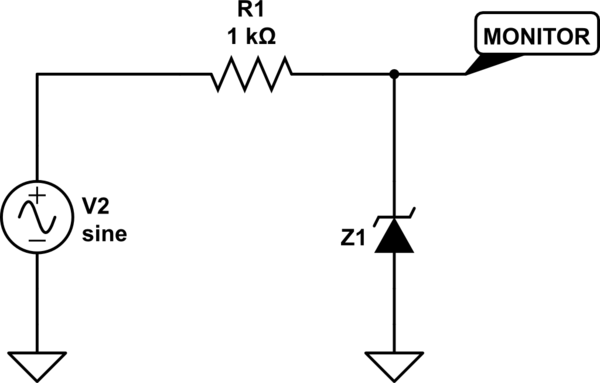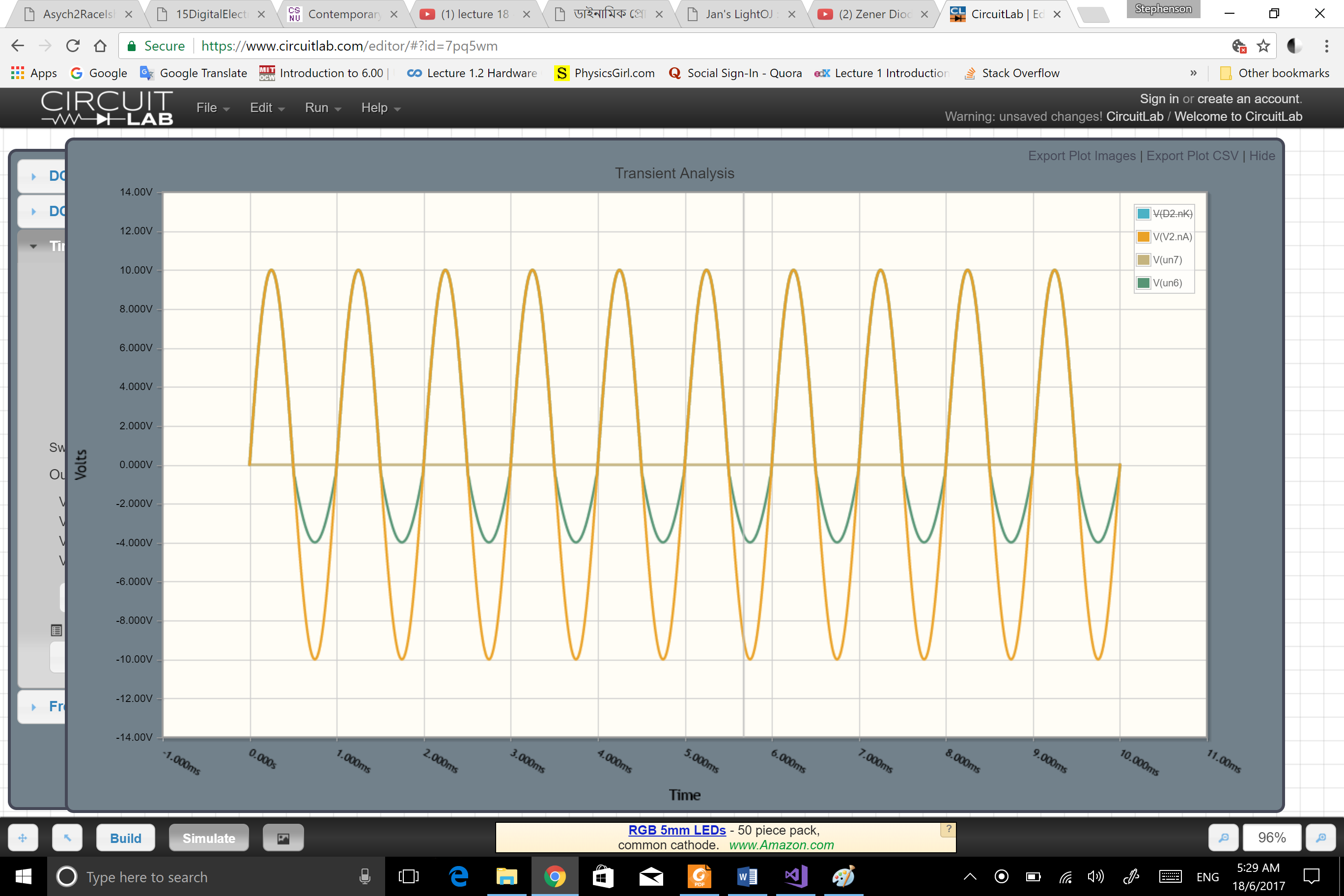Assuming that your circuit ground is on the lower end of the AC voltage source, and the sense point is the anode of the zener, then the response can be divided into two sections: positive and negative half-cycles of the AC.
For positive cycles - since D1 is reverse-biased, no current can flow, and the voltage on the zener is equal to the positive voltage from the AC source.
For the negative cycles - D1 is now forward-biased, and so is the zener. So the voltage becomes the sum of the two, but in a negative sense. I'm surprised that the numeric value is 4 volts peak, but I suspect that the fact that there is no current-limiting resistor allows enormous currents in the simulator. I suggest you check.
In order to do what I think you want to do, change your circuit to

simulate this circuit – Schematic created using CircuitLab



